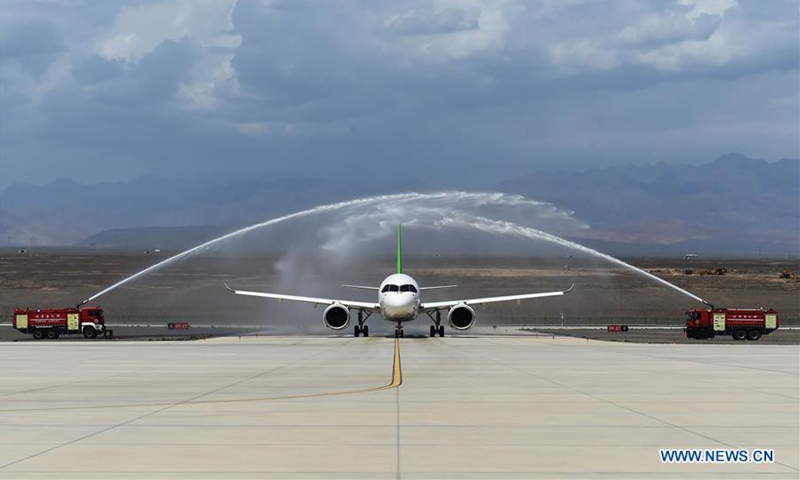
Photo: Xinhua
There's more to expect from China's aviation market, not only its peer-surpassing domestic recovery, but a deregulation of the market to enable greater access for foreign businesses. The views were expressed by government officials, industry executives and market watchers during an aviation forum on Tuesday at the ongoing China International Fair for Trade in Services (CIFTIS) in Beijing.
As of the end of August, China's civil aviation flights topped 13,000 per day, equal to 90 percent of pre-virus levels, Cui Xiaofeng, deputy director of the Civil Aviation Administration of China (CAAC), revealed at the forum.
Notably, cargo flights between China and countries along the route of the Belt and Road Initiative (BRI) hit 1,068 per week, 2.6 times the pre-virus numbers, according to Cui.
"We're optimistic about the recovery of China's economy and its air travel," Adam Li, vice president for China of Emirates Airline, told the Global Times Tuesday on the sidelines of the CIFTIS.
Currently, the airline operates 12 weekly cargo flights to and from China - eight serving Shanghai, one serving Beijing and three serving Guangzhou, according to Li.
Passenger flights are still facing problems. Emirates' passenger flights to the Chinese mainland have been reduced to one per week from 35 prior to the pandemic.
In another example, Ethiopian Airlines' 50-55 flights a week serving the Chinese market revolve around cargo flights, according to Tekle G/Yohannes, the airline's area manager for China in Beijing.
In addition to its current presence, the African airline will "operate flights twice weekly from Wuhan within two to three weeks," he told the Global Times on Tuesday, starting with cargo transport.
In anticipation of increased density and frequency of flights, Li called for the creation of international recognized anti-virus standards for aviation, which adds to the recovery of travel confidence would underpin the rebooting of the global aviation sector.
Emirates' outlook for the Chinese market centers on a long-term plan assuming that international passenger flights will recover slowly. The airline will reach out to more niche markets as the nation's aviation sector is opened wider to foreign carriers, he commented.
There's still substantial potential and leeway in opening up China's civil aviation, Zhang Qing, deputy director of the CAAC's Planning Department, said in a speech to the forum on Tuesday.
The CAAC official pledged to implement a more active opening strategy, support the building of BRI free trade zones and ports, push for reforms of global civil aviation governance, and seek a higher-level opening-up of the nation's civil aviation sector.
"Where China can potentially benefit is by opening up licenses for architecture firms and design companies, and particularly for international operators," Andrew Massey, deputy director for China covering aerospace, aviation, and rail of the Department for International Trade at the British Embassy in Beijing, told the Global Times in an interview on Tuesday.
It's very difficult for an international operator to get class-A license, thereby complicating the involvement of major international companies that have huge expertise in design and planning of international airports in the Chinese market, Massey said. The Chinese government could look to take that sector off the negative list to enable more competition.
"There're tremendous opportunities here for British companies. Part of the reason for that is the UK aviation industry is complementary to the Chinese industry," he said, adding that "I am very keen to bring the best in terms of design, engineering and equipment, to China."




